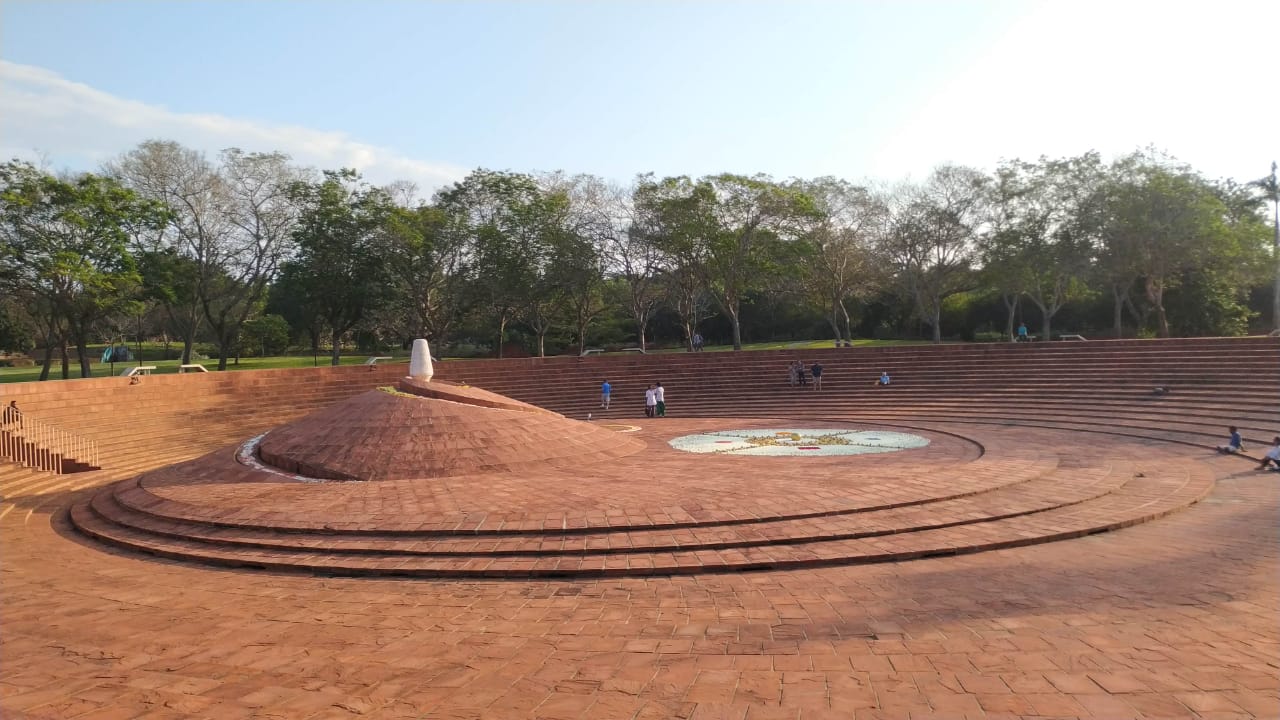The Matrimandir Gardens
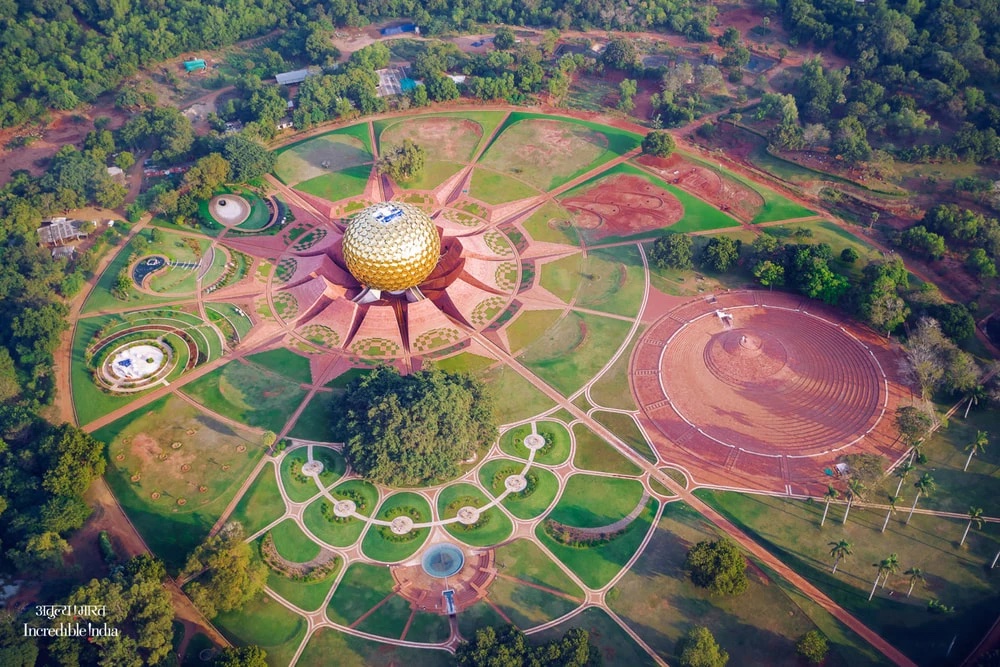
The Mother named the 12 Gardens around the Matrimandir: Existence, Consciousness, Bliss, Light, Life, Power, Wealth, Utility, Progress, Youth, Harmony, Perfection. They seem to represent what She called “the twelve powers of the Mother manifested for Her work”; and Sri Aurobindo wrote that these “12 powers are the vibrations that are necessary for the complete manifestation.”
To visit the Matrimandir Viewing Point and the Inner Chamber please go to this page.
Role of the Gardens
The Matrimandir Gardens are meant to manifest the states of consciousness through a beautiful landscape that surrounds the Matrimandir. The Matrimandir Gardens cannot be compared with conventional gardens or parks in the world as the main purpose of Matrimandir Gardens is to evoke various states of consciousness for the visitors. They are a place for inner concentration as much as the Inner Chamber. According to the Mother, ‘It [the gardens] must be a thing of great beauty, of such beauty that when people come they will say “Ah, this is it.” It must be an expression of that consciousness which we are trying to bring down’. She added: ‘One must know how to move from consciousness to consciousness’. For most of the gardens, one flower has been chosen by The Mother as its main representation. Most of these belong to the hibiscus family.
Four of the Matrimandir Gardens are already developed, and the remaining eight Gardens are yet to be manifested. The unity of the project will be ensured through each garden being in harmony with its environment.
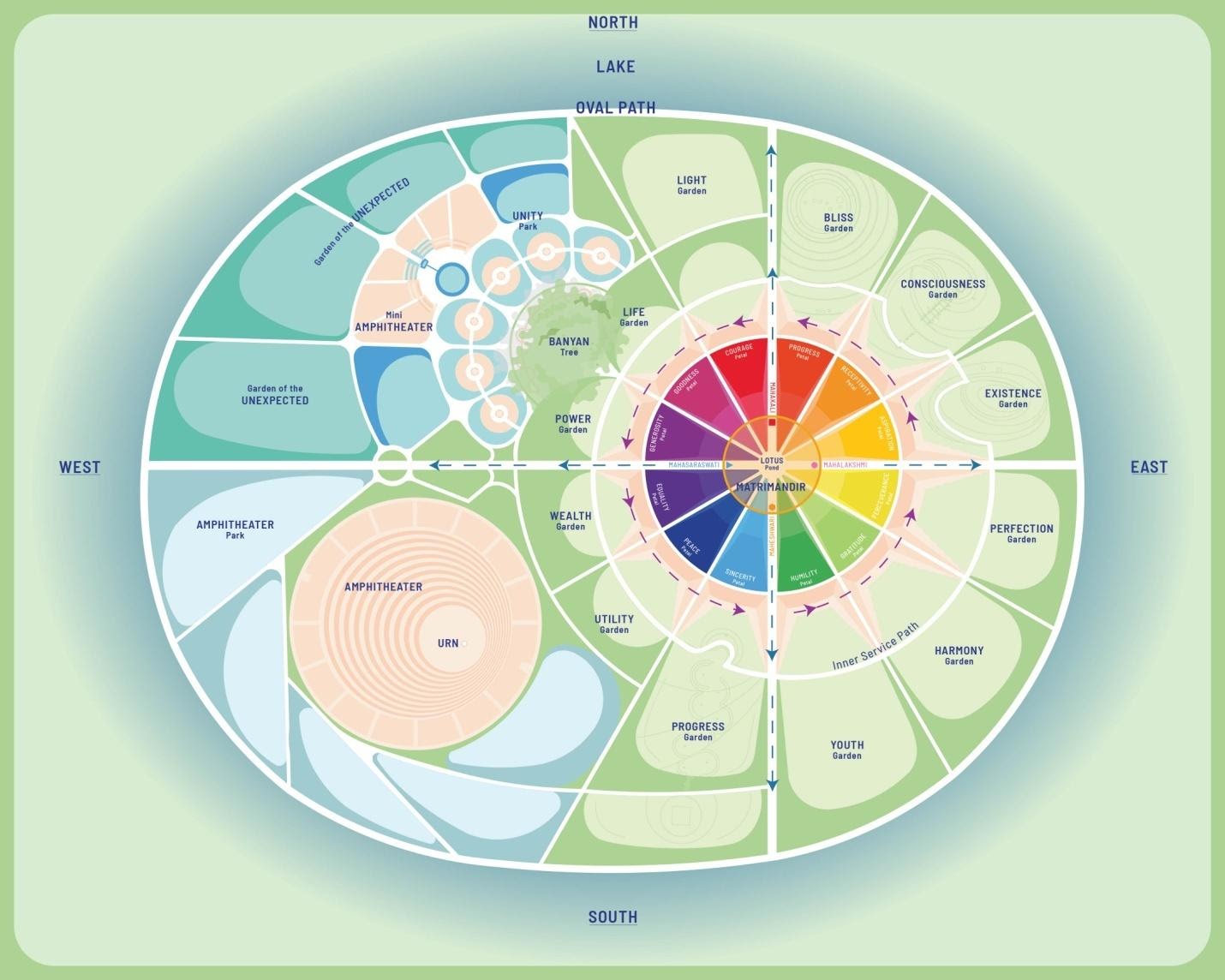
There are twelve gardens surrounding the structure, converging around it in the huge petal crown from which the Matrimandir arises. In 1969, when discussing the gardens, the Mother indicated that they would have to be of such quality and beauty that people visiting them would experience, physically and concretely, the significance of each garden:
"One must know how to move from consciousness to consciousness."
Garden names
- Existence
- Consciousness
- Bliss
- Light
- Life
- Power
- Wealth
- Utility
- Progress
- Youth
- Harmony
- Perfection
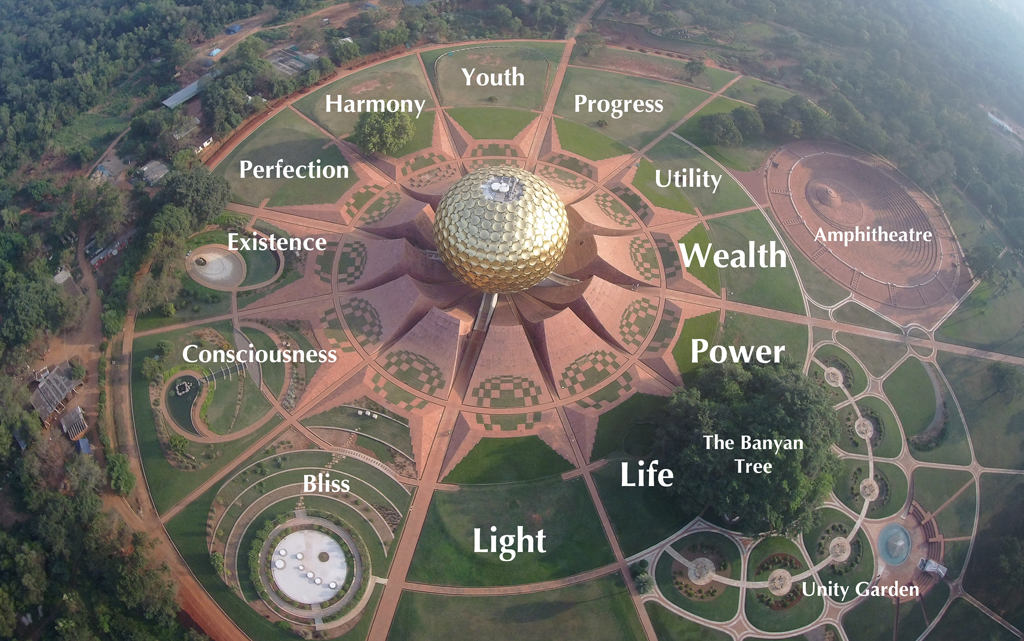
Existence, Consciousness, Bliss, Light, Life, Power,Wealth, Utility, Progress, Youth, Harmony, Perfection.
The Mother gave these names in French: Existence, Conscience, Félicité, Lumière, Vie, Pouvoir, Richesse, Utilité, Progrès, Jeunesse, Harmonie, Perfection.
The sequence in which these names are listed is important because, in Sanskrit, the first three names are Sat-Chit-Ananda, which is the essence of the Divine. Perfection being the ultimate aim of evolution comes last in the list. The gardens rotate counter-clockwise and the first and last gardens are on either side of the East radial pathway.
It was probably towards the end of 1971 or early 1972 that the Mother selected the central flower of each garden in the presence of Richard (an inmate of Sri Aurobindo Ashram) who had brought these and many other flowers to her. She selected a hibiscus for each of the gardens except Wealth and Perfection. (The Mother had given spiritual names to some 900 flowers and had named “Power’ most hibiscus.) Some other flowers expressing the vibration of each particular garden will also find a place in it.
For the Garden of Wealth, Richard reminded the Mother that “Wealth” was the name she had given to water lilies and “Riches” to cacti; she concluded: “These flowers will do”. Hence in the Garden of Wealth, there will be mainly ponds with water lilies of different colours and a garden with all sorts of cacti.
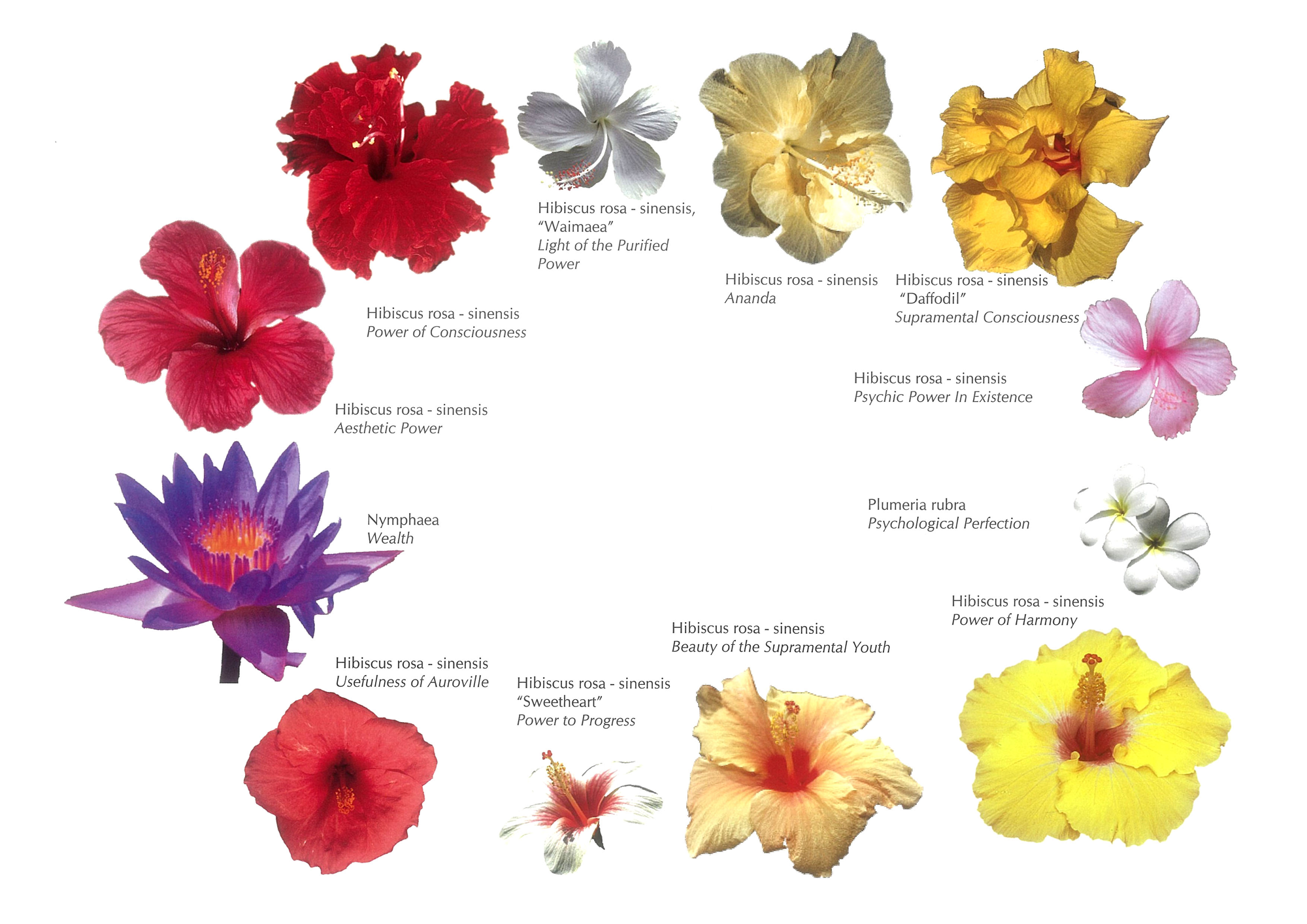
1. Garden of Existence
Flower: Hibiscus: Psychic Power In Existence.
Colour: Pink
Other Flowers: psychic influence in the emotions; the being organised around the psychic; psychic aspiration; psychic offering
2. Garden of Consciousness
Flower: Hibiscus - Supramental Consciousness.
Colour: golden yellow
Other Flowers: Radha's consciousness; consciousness turned towards the light; intensity of the consciousness in the full supramental light
3. Garden of Bliss
Flower: Hibiscus - Ananda.
Colour: Pale cream yellow
Other Flowers: Krishna's Ananda (light blue); Ananda in the centres (cream-white/pink; Ananda in the physical body (cream-white/red)
4. Garden of Light
Flower: Hibiscus - Light Of The Purified Power.
Colour: White
Other Flowers: light; light without obscurity; integral opening to the light
5. Garden of Life
Flower: Hibiscus - Power Of The Consciousness.
Colour: light red
Other Flowers: life energy; quiet strength in the vital; spiritual awakening of the vital; faultless planning of work; transformed sex center
6. Garden of Power
Flower: Hibiscus - Aesthetic Power.
Colour: reddish pink
Other Flowers: power of expression; power's aspiration to become an instrument for the Divine's work; beauty arising from perfect consecration
7. Garden of Wealth
Flower: Nymphaea - Wealth.
Colour: mixed
Other Flowers: cactus: riches. color: mixed, all kinds of water lilies and cactae
8. Garden of Utility
Flower: Hibiscus - Usefulness of the New Creation
Colour: Pink
Other Flowers: thoroughness; Skill in works; Enthusiasm; Mahasaraswati's perfection in work
9. Garden of Progress
Flower: Hibiscus: Power To Progress
Colour: cream-white
Other Flowers: progress (multicolored)
10. Garden of Youth
Flower: Hibiscus - Beauty Of Supramental Youth.
Colour: orange-pink/apricot-yellow
Other Flowers: eternal youth; energy turned towards the Divine; strength in the vital
11. Garden of Harmony
Flower: Hibiscus - Power Of Harmony.
Colour: Bright golden yellow
Other Flowers: collective harmony; harmony - vital/integral
12. Garden of Perfection
Flower: Plumeria/Frangipani: Psychological Perfection.
Colour: white/yellow
Other Flowers: simple sincerity; faith; devotion; aspiration; surrender; psychological perfection in the course of fulfillment; psychological perfection in matter
Though the Mother did not say it explicitly these gardens as a whole seem to represent what the Mother calls “the twelve Powers of the Mother manifested for her work”. Sri Aurobindo explained that these “12 powers are the vibrations that are necessary for the complete manifestation”.
It is probably because “the manifestation” is not yet “complete” and all these powers and vibrations haven’t “manifested” fully as yet that the Mother said that these twelve gardens must “be an expression of that consciousness which we are trying to bring down”. This explains also why the architect keeps on stressing that these gardens will evolve with the consciousness of the Aurovilians.
“That which has thrown itself out into forms is a triune Existence-Consciousness-Bliss. Sachchidananda… All things that exist are what they are as terms of that existence, terms of that conscious force, terms of that delight of being.”
(Sri Aurobindo)
“The descending triangle represents Sat-Chit-Ananda.
The ascending triangle represents the aspiring answer from matter under the form of life, light and love.
The junction of both – the central square – is the perfect manifestation having at its centre the Avatar of the Supreme – the lotus.
The water – inside the square – represents the multiplicity, the creation.” (The Mother)
- Sat, Chit and Ananda are the Sanskrit words for Gardens 1, 2 and 3 respectively.
- Life and Light are the names of Gardens 4 and 5.
- Love is represented here by the Matrimandir itself (at first referred to by the Mother as the Pavilion of [Divine] Love). (In 1968-69, at a time when the 12 gardens were planned on the Lake’s outer bank, she had spoken of a Garden of Love surrounding the Matrimandir.)
- The Matrimandir, the Pavilion of the Mother, is in the shape of a fully open lotus.
- Water will be represented by the Lake surrounding Matrimandir and its gardens. In 1965, the Mother had said that water would also surround Matrimandir itself; this feature has been retained – symbolically – by channels filled with running water surrounding the Matrimandir and its twelve large ‘Petals’.

In a conversation about the Matrimandir and the significance of the 12 ‘petals’ of her symbol, the Mother was reminded of Théon’s ‘Cosmic Square’ in which Love was at the centre and whose four sides were Might, Light, Life and Utility.*
- Love at the centre is represented by the Matrimandir, Pavilion of [Divine] Love.
- The Mother changed Might into Power, which is the name of Garden 6.
- Light and Life are the names of Gardens 4 and 5.
- Utility is the name of Garden 8.
These hints may help us to understand better the deeper meaning of these twelve gardens.
Max Théon, editor of the ‘Revue Cosmique’, was the Mother’s instructor in occultism.
*Max Théon wrote these names in French: Amour, Puissance, Lumière, Vie, Utilité. Puissance should be translated here as Might because ‘Dieu tout puissant’ is ‘God almighty’.
See Also
-
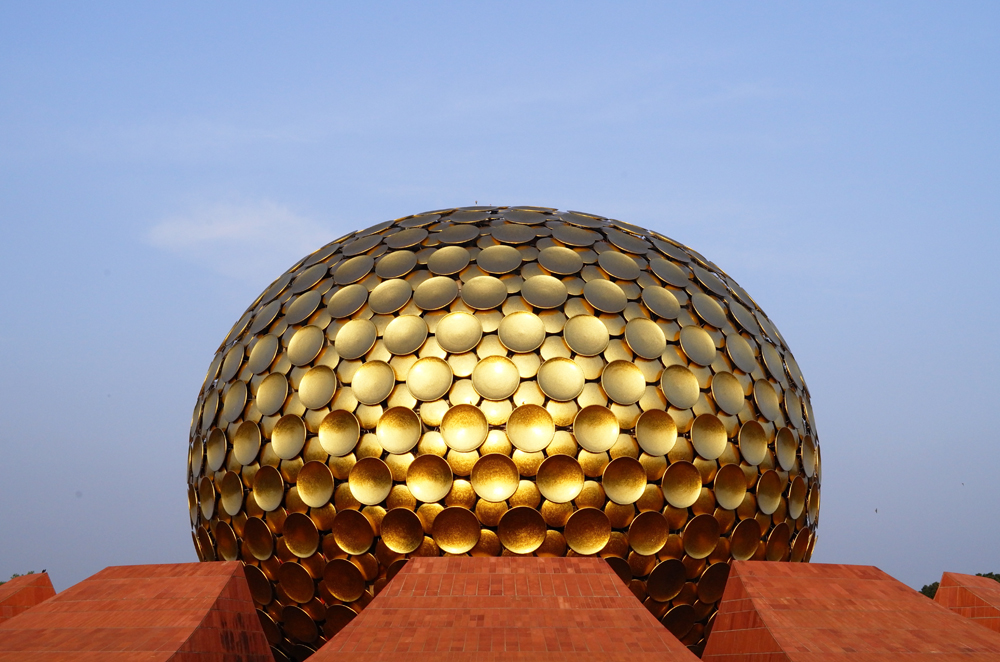
Matrimandir Layout
Temple of the MotherAt the very centre of Auroville stands the Matrimandir, a magnificent golden sphere whose elegant architectural form symbolises the birth of a new consciousness. The Sanskrit word “Matrimandir’ means “Temple of the Mother” referring to the evolutionary, conscious and intelligent principle of Life which leads the human journey from its present limitations into the next stage of its evolutionary adventure.To visit the Matrimandir Viewing Point and the Inner Chamber, please go to this page.

